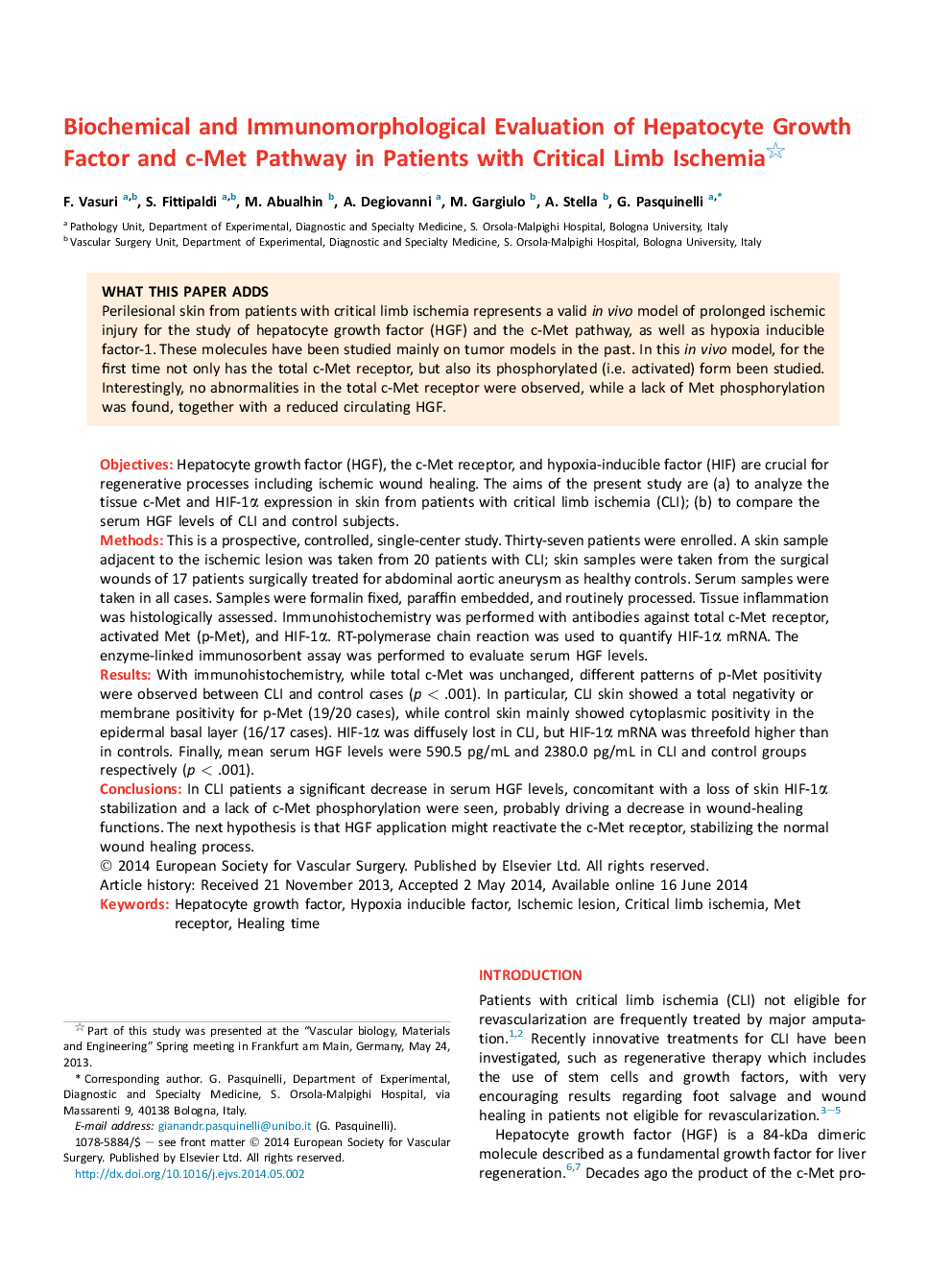| کد مقاله | کد نشریه | سال انتشار | مقاله انگلیسی | نسخه تمام متن |
|---|---|---|---|---|
| 5958137 | 1575449 | 2014 | 8 صفحه PDF | دانلود رایگان |

ObjectivesHepatocyte growth factor (HGF), the c-Met receptor, and hypoxia-inducible factor (HIF) are crucial for regenerative processes including ischemic wound healing. The aims of the present study are (a) to analyze the tissue c-Met and HIF-1α expression in skin from patients with critical limb ischemia (CLI); (b) to compare the serum HGF levels of CLI and control subjects.MethodsThis is a prospective, controlled, single-center study. Thirty-seven patients were enrolled. A skin sample adjacent to the ischemic lesion was taken from 20 patients with CLI; skin samples were taken from the surgical wounds of 17 patients surgically treated for abdominal aortic aneurysm as healthy controls. Serum samples were taken in all cases. Samples were formalin fixed, paraffin embedded, and routinely processed. Tissue inflammation was histologically assessed. Immunohistochemistry was performed with antibodies against total c-Met receptor, activated Met (p-Met), and HIF-1α. RT-polymerase chain reaction was used to quantify HIF-1α mRNA. The enzyme-linked immunosorbent assay was performed to evaluate serum HGF levels.ResultsWith immunohistochemistry, while total c-Met was unchanged, different patterns of p-Met positivity were observed between CLI and control cases (p < .001). In particular, CLI skin showed a total negativity or membrane positivity for p-Met (19/20 cases), while control skin mainly showed cytoplasmic positivity in the epidermal basal layer (16/17 cases). HIF-1α was diffusely lost in CLI, but HIF-1α mRNA was threefold higher than in controls. Finally, mean serum HGF levels were 590.5 pg/mL and 2380.0 pg/mL in CLI and control groups respectively (p < .001).ConclusionsIn CLI patients a significant decrease in serum HGF levels, concomitant with a loss of skin HIF-1α stabilization and a lack of c-Met phosphorylation were seen, probably driving a decrease in wound-healing functions. The next hypothesis is that HGF application might reactivate the c-Met receptor, stabilizing the normal wound healing process.
Journal: European Journal of Vascular and Endovascular Surgery - Volume 48, Issue 4, October 2014, Pages 430-437